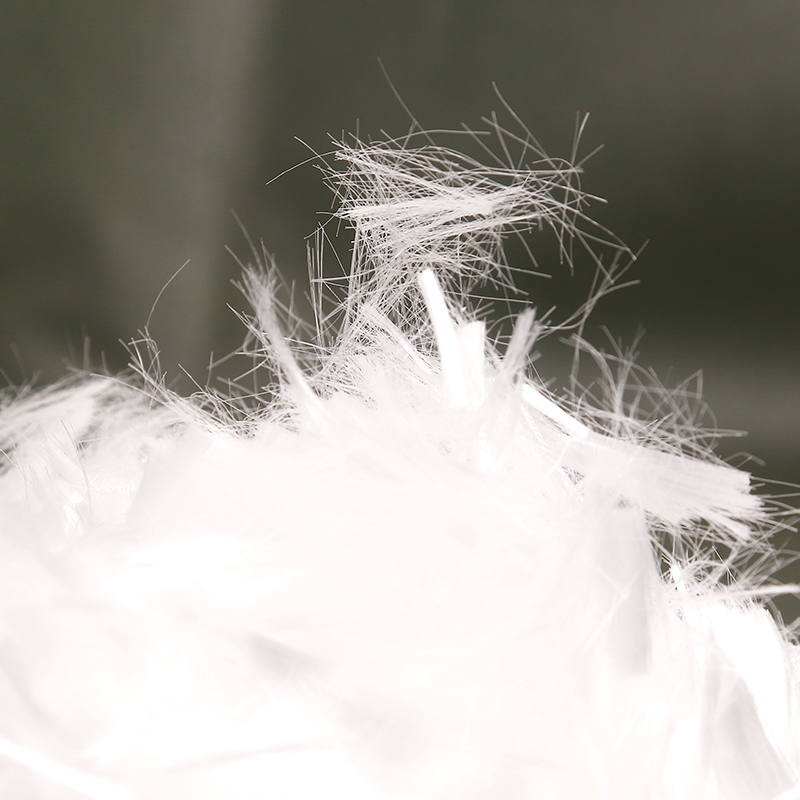Writer: admin Time:2025-05-28 10:09 Browse:
Polypropylene fiber usually refers to polypropylene microfiber, which is a type of artificial organic fiber (linear homopolymer) processed through a spinning process to form a single filament microfiber. The conventional specifications are FD9130 and FD9180, and the length and packaging can be customized according to needs. Plain concrete has low cost, but it has many drawbacks, such as porous structure, cracking, poor toughness, and low resistance to peeling. In order to improve and strengthen plain concrete, it is necessary to add some secondary strengthening materials or additives, such as nano silicon powder, nano calcium powder, reinforcing agents, or organic or inorganic fibers. Among them, polypropylene fibers are widely and extensively used in concrete due to their advantages such as light weight, high strength, good toughness, good corrosion resistance, and low cost.

The impact of polypropylene fibers on the durability of concrete is mainly reflected in the following aspects:
1. Polypropylene fiber reinforced concrete has good crack resistance performance
Fresh concrete is a porous structure, and the evaporation and migration of water can cause changes in the volume of concrete, leading to the generation of cracks. On the research surface, adding polypropylene fibers to concrete can form a 3D internal structural support system, effectively reducing the volume change of concrete caused by water loss, thereby reducing concrete cracking and increasing the durability of concrete. However, the fineness, length, and dosage of fibers can have an impact on this performance.
2. Polypropylene fiber reinforced concrete has good anti permeability performance
Permeability resistance is one of the important indicators affecting the durability of concrete. Early concrete, due to the rapid evaporation of moisture, causes large-scale plastic micro cracking. Micro cracking can increase the absorption of water by concrete and the penetration of water into the internal structure of concrete, further affecting the performance of steel bars. After adding polypropylene fibers, plastic cracking will be effectively controlled, thereby reducing the infiltration and infiltration of water. However, studying the surface does not necessarily mean that the larger the amount of fiber used, the better. Due to the relatively poor gripping force between polypropylene fibers and cement, and the excessive use of fibers, the free space between fibers and cement will increase, thereby reducing the impermeability of concrete. In addition, the fiber diameter also affects the anti permeability performance.
3. Polypropylene fiber reinforced concrete has good resistance to chemical attack
Chloride ions and sulfate ions are common and widespread chemical corrosion phenomena in concrete. Chloride ions and sulfate ions can penetrate through cracks, continuously diffuse, and penetrate into the interior of concrete, corroding internal structures such as steel bars, causing damage to concrete, and affecting its service life. The addition of polypropylene fibers can improve the microporous structure and internal structure of concrete, reduce micro cracking of concrete, prevent the invasion of chloride ions and sulfates from the surface to the interior, and thus improve the performance of concrete.
4. Polypropylene fiber reinforced concrete has good freeze-thaw resistance
The ability to resist freezing and thawing is an important indicator for testing concrete, especially in hydraulic engineering. The freezing and melting of water can have an impact on the micro pore structure inside concrete. After freeze-thaw cycles, the strength and durability of plain concrete will decrease. After adding polypropylene fibers, on the one hand, it can improve the water sealing performance of concrete and reduce water infiltration. On the other hand, due to the fiber changing the micro pore distribution and structure of concrete, the expansion force generated by freeze-thaw is suppressed.
5. Polypropylene fiber reinforced concrete has good fire resistance performance
In the event of a fire, the tension generated by the internal high temperature of concrete can have a destructive impact on the concrete structure and even threaten its lifespan. Research has shown that the addition of polypropylene fibers can improve the distribution and structure of micropores inside concrete. When the temperature exceeds 180 degrees, the fibers melt and form a network of pores, releasing internal heat and reducing internal tension. Protect the lifespan of concrete in case of fire. However, when the temperature is above 600 degrees, the role of fibers is very limited.
6. Polypropylene fiber reinforced concrete has good carbonization resistance
In the early stage of concrete, carbon dioxide enters the interior and reacts with water-based compounds, especially calcium hydroxide, which changes the acidity and alkalinity of the concrete. At the same time, it affects the micro pore structure inside the concrete. After the addition of polypropylene fibers, it will prevent and reduce changes in the microporous structure.
Polypropylene fibers have a negative impact on the strength and creep resistance of concrete due to their low modulus.